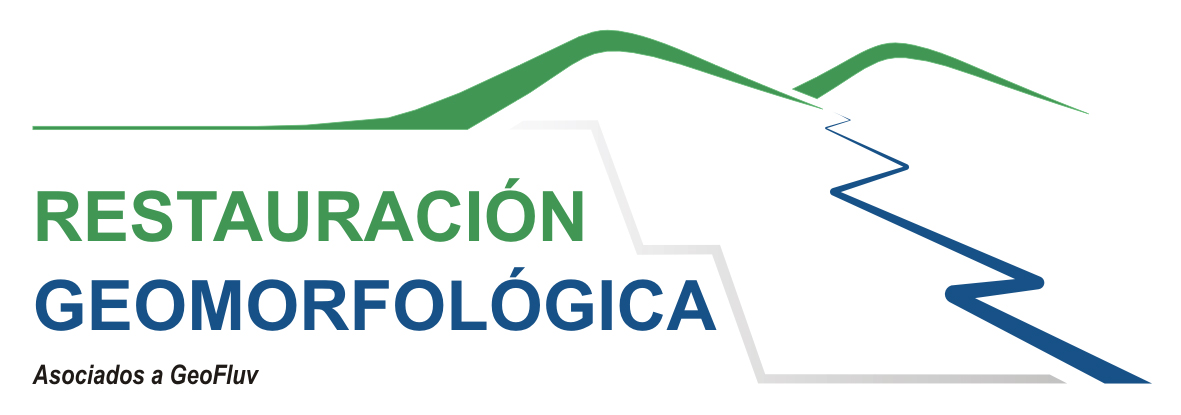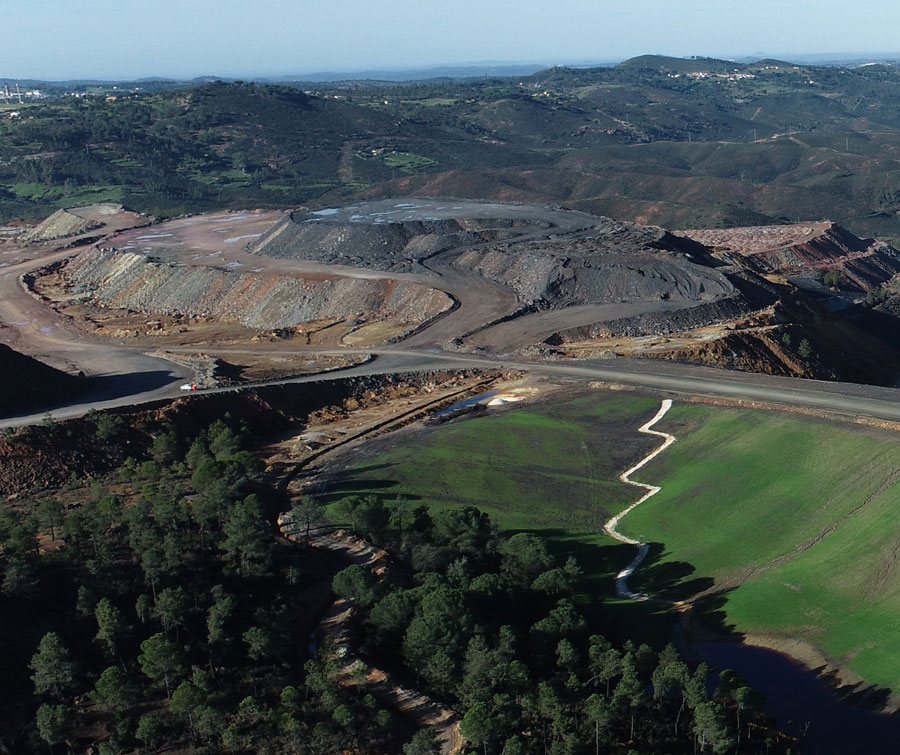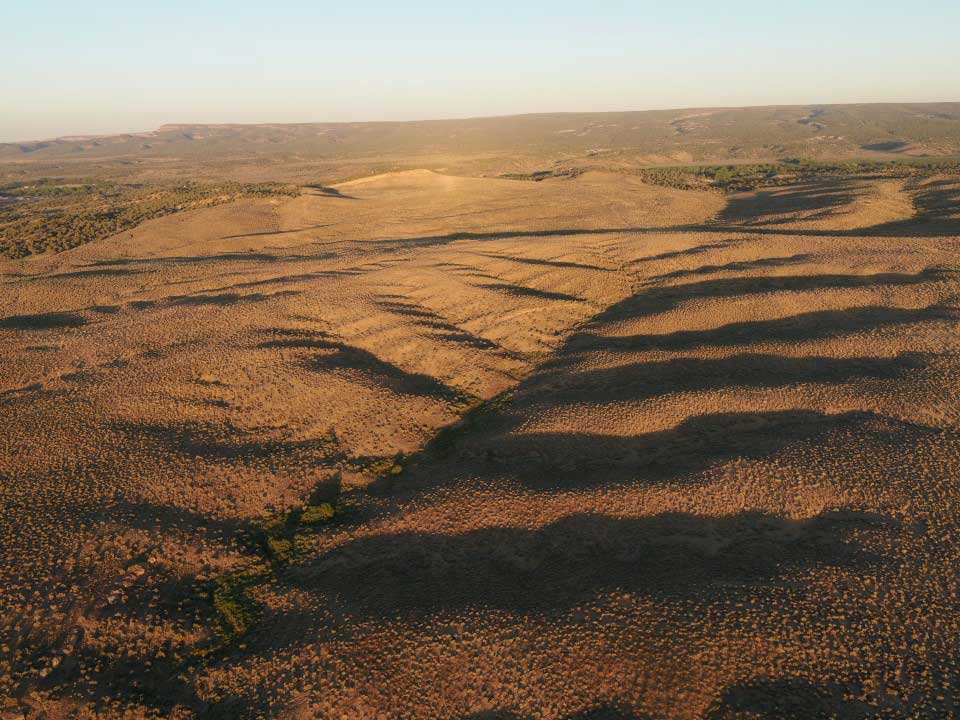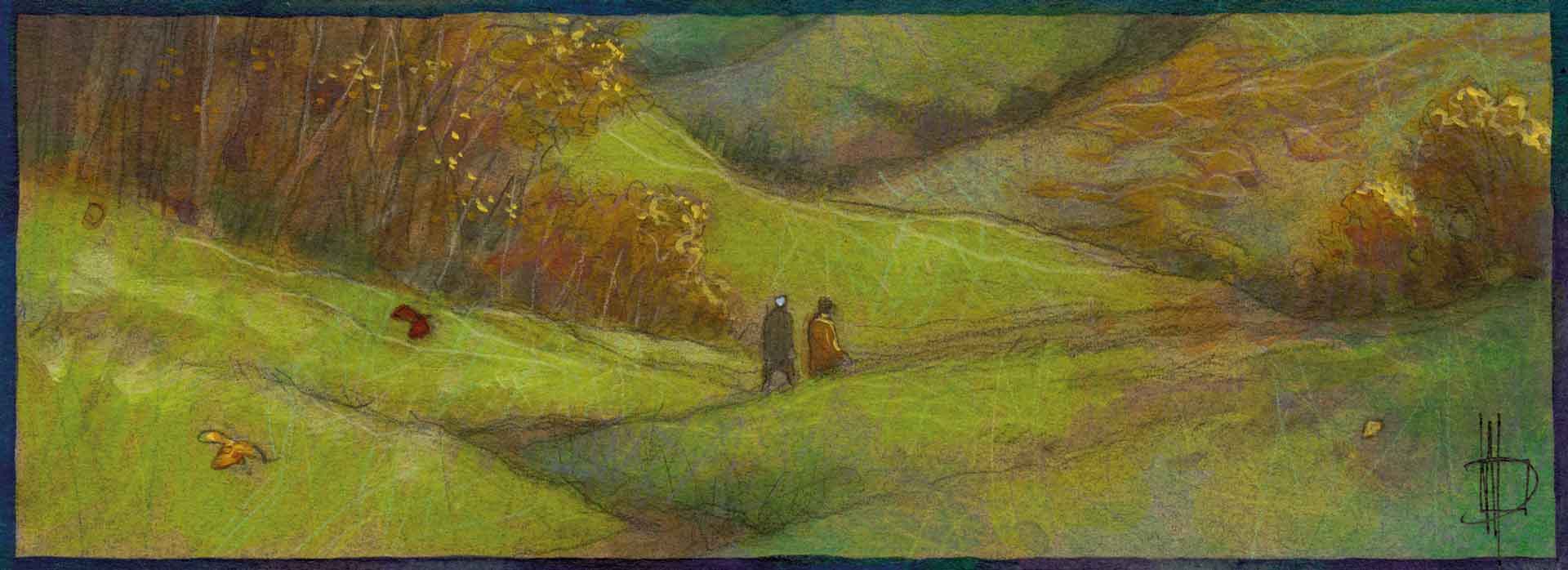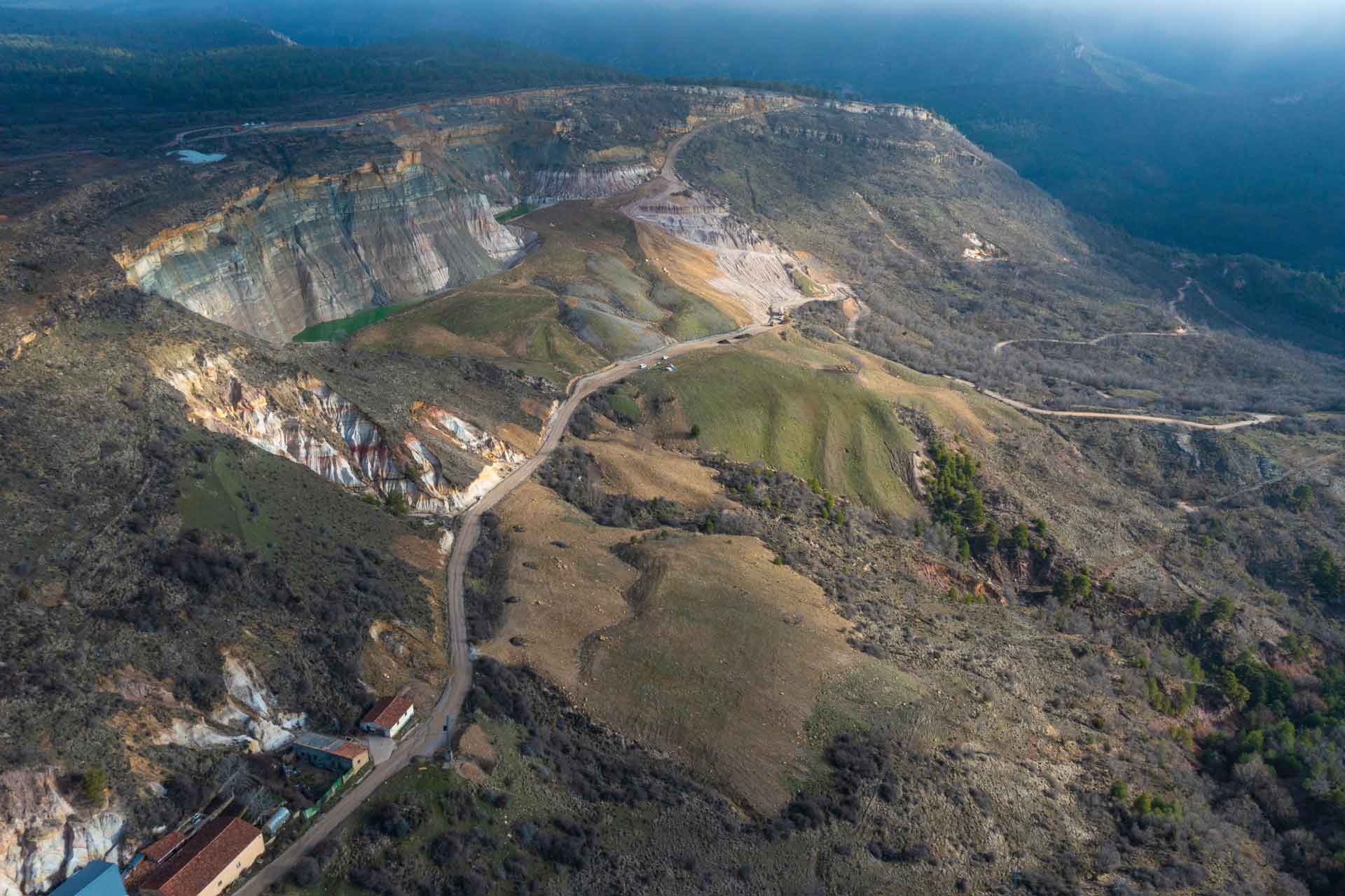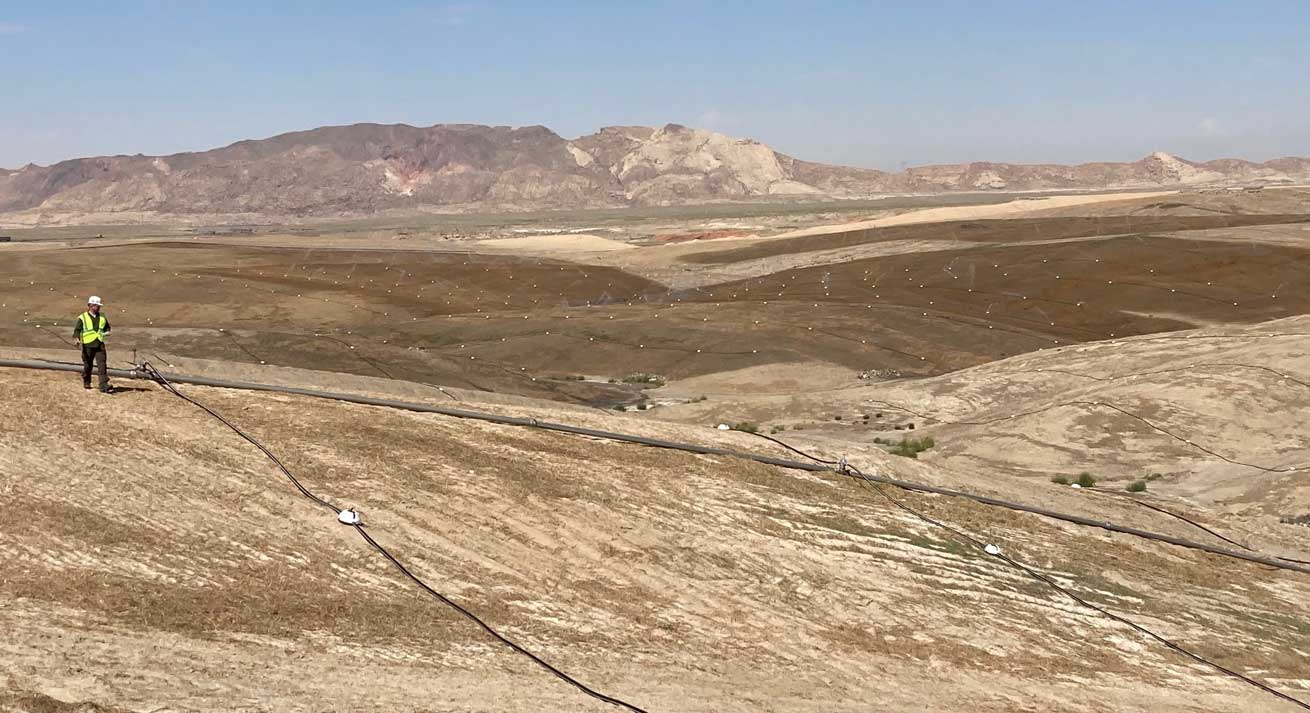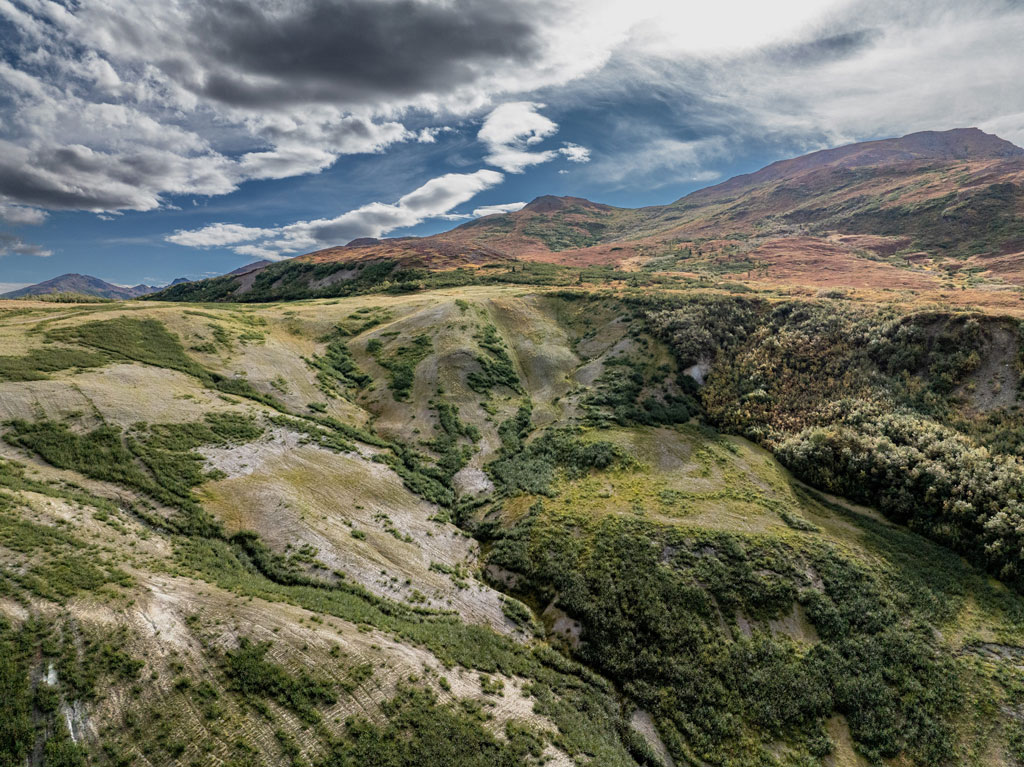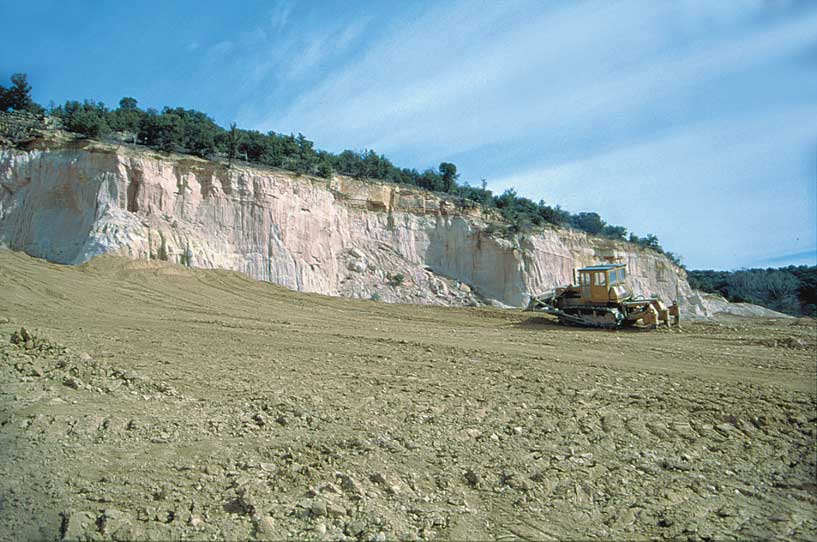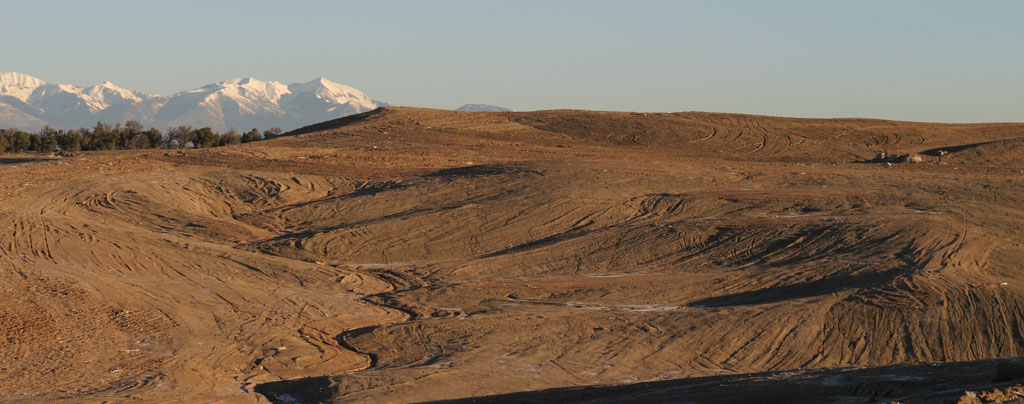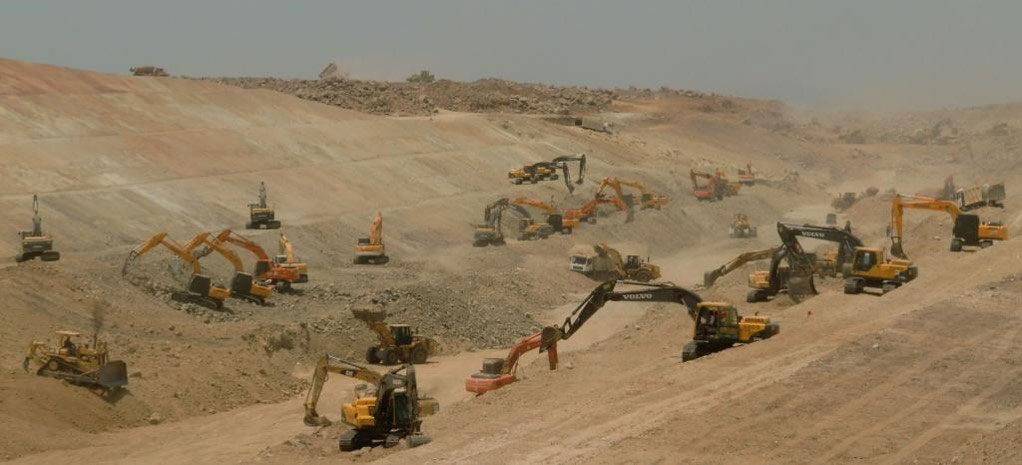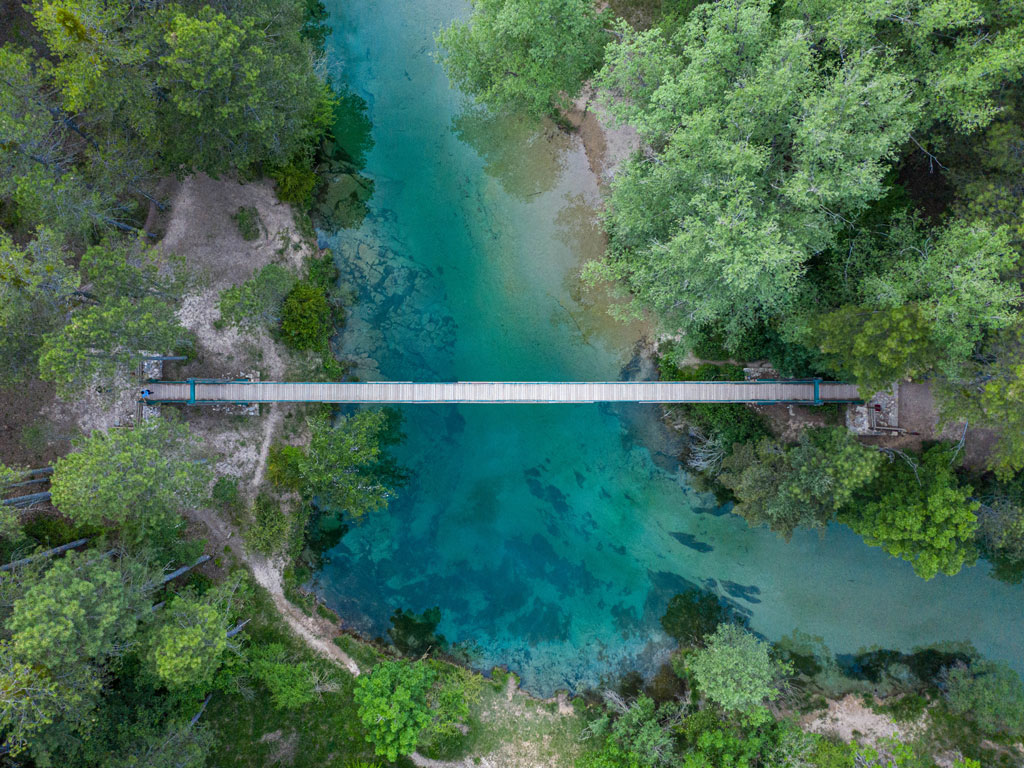Mission and Vision
Mission
Vision
The lower half of this image, with green shades, shows the ecological recovery, on the basis of a geomorphic landform design, of an abandoned coal mine in Alaska. Autoría foto: Restauración Geomorfológica® - VAST
What is Restauración Geomorfológica®?

LIFE RIBERMINE Project (Peñalén, Guadalajara). Restauración Geomorfológica®
It all began in La Revilla (Orejana, Segovia) in 1995
Restauración Geomorfológica® is an initiative created and directed by José F. Martín Duque, Professor of Geomorphology in the Faculty of Geological Sciences at the Universidad Complutense de Madrid (UCM). Since 1995, J.F. Martín, always in collaboration with other people, has been leading projects of geomorphic reconstruction of lands transformed by earth movements (especially mining) The birth of Restauración Geomorfológica® at that time can be traced back to the restoration of La Revilla quarry (Orejana, Segovia), using geomorphic principles. Following a brilliant idea by Javier de Pedraza, this restoration concept started pioneering in an international context. Then, in 2009, we came into contact with Nicholas Bugosh and the GeoFluv – Natural Regrade method, which we have used extensively since then.
Currently, Restauración Geomorfológica® is several things. On one hand, it is a UCM research, transfer and training sub-group dedicated to providing geomorphological solutions to complex environmental problems.
This sub-group of lecturers and researchers is integrated in the
La Revilla (Orejana, Segovia). Restauración Geomorfológica®
UCM Research Groups of Environmental and Risks (910391) and Plant Evolutionary Ecology and Ecological Restoration (910314) (910314). Since its inception, it has also been a member of REMEDINAL, the CAM’s Network of Excellence in Ecological Restoration.
Restauración Geomorfológica® also brings together a whole range of geomorphic restoration designs, actions, research, evaluations and on-site services. It is also a platform for dissemination, university teaching, continuous training and the transfer and exchange of experiences on “another way of earth moving “.
What is the Geomorphic Restoration approach (GR)?
La Plata mine (New Mexico, United States). Edward Epp
This paper (Martín Duque, 2024) considers the international “state of the art” on Geomorphic Restoration as of 2024, the year in which this website is relaunched.
This website benchmarking the result of 30 years of experience of land restoration group work, 15 of them achieved using GeoFluv – Natural Regrade and five using the Talus Royal method, aims to lay the foundations to contribute to the future development of this discipline.
Philosophy
Haramain Project (Saudi Arabia)
All these earthworks generate a very significant environmental impact, the most important of which is the effect on their fluvial ecosystems due to the deposition of sediments and pollutants (in the case of metallic mining).
One of the main difficulties of conventional mining rehabilitation is its high vulnerability to water erosion and the yield of sediments into the environment, often generating physical and/or chemical contamination. Geomorphic restoration helps to solve this problem, creating more mature and erosion-resistant landscapes.
From Restauración Geomorfológica® we want to promote a real paradigm shift in the way we move land, so that, through excavations and dump, more harmonious and stable landscapes are created, which do not experience accelerated erosion. This is part of a pressing need, rather than a fad or trend, and is rooted in the concepts of the Circular Economy, or Nature Based Solutions (NbS). In this way, the wastes and excavation scars of today become the roots of tomorrow’s functional landscapes.
Tagus River (Poveda de la Sierra, Guadalajara). Miguel Ángel Langa – Fotolanga.e
